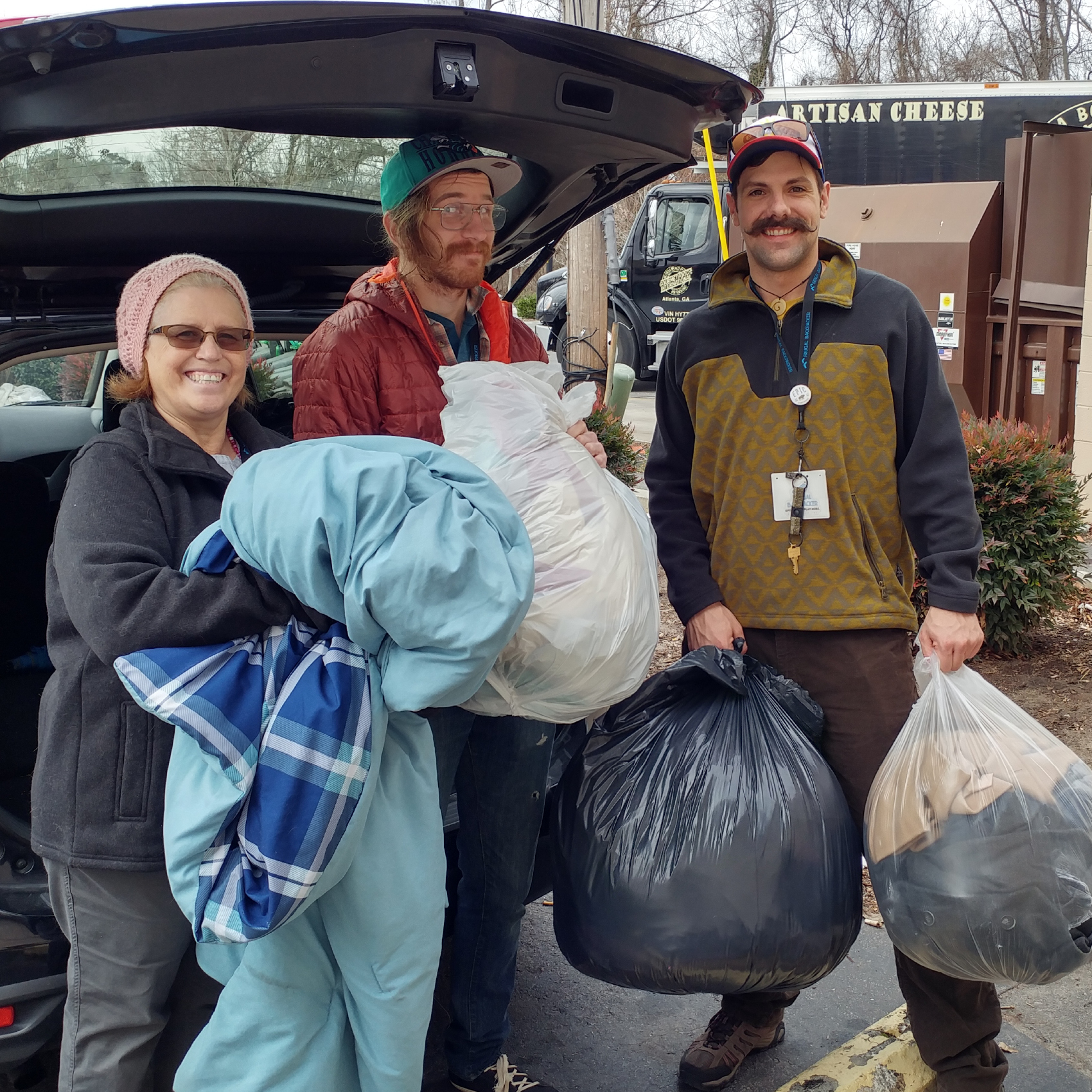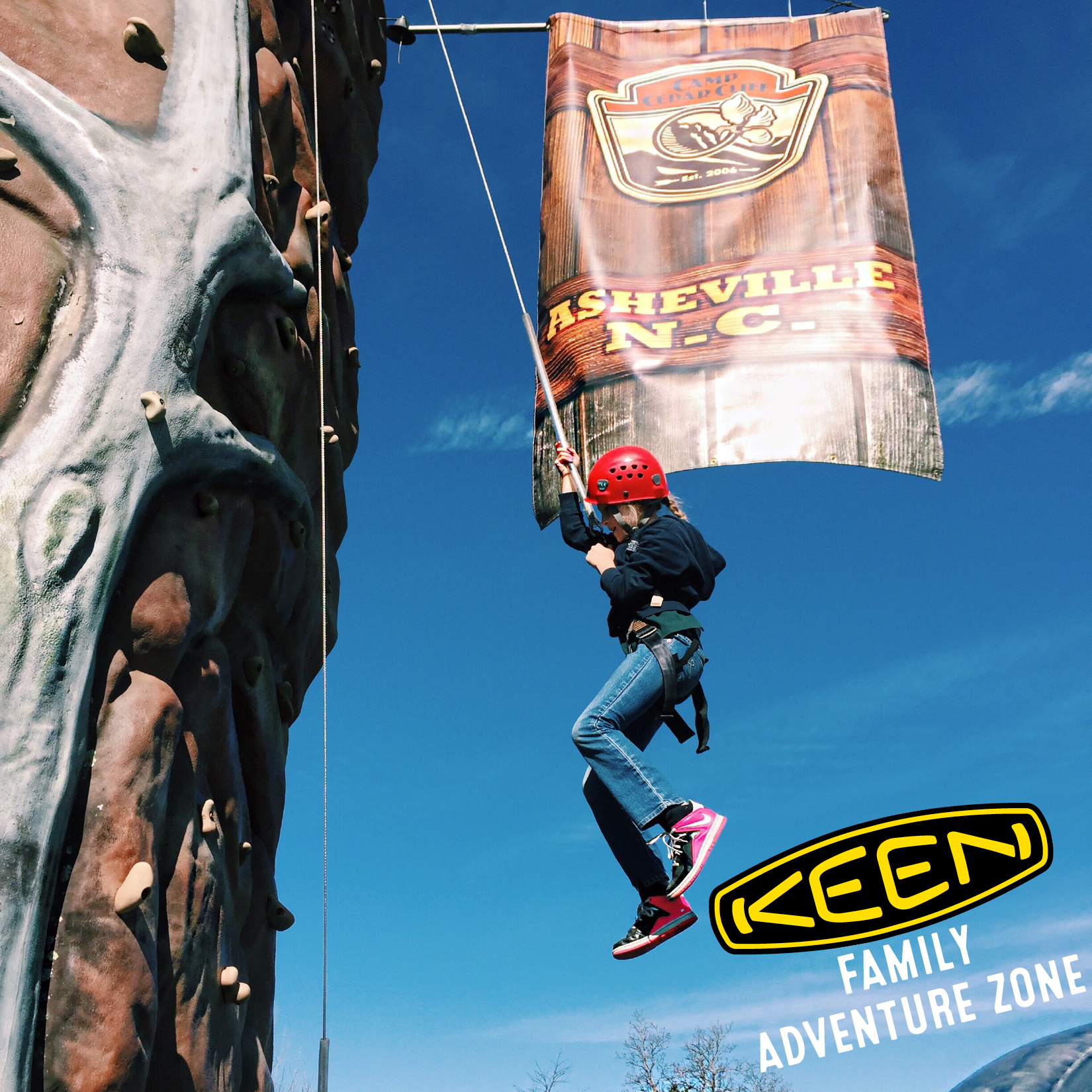While subzero temperatures and dwindling daylight can really put a damper on our motivation to hit the trail, the Blue Ridge Mountains are never quite as dramatic and ethereal as they are in the depths of winter. Familiar trails are transformed as bare trees unlock long-range views, the balds sparkle under a thick feathering of frost, and visitors are few and far between. But perhaps the most powerful offering of the winter landscape are the waterfalls: sheaths of ice, rainbows suspended in frozen mist, the cascade slowed or suspended entirely. See for yourself at these four waterfalls in the North Carolina mountains to explore this winter. (Check out Frugal Backpacker’s Winter Hiking Basics.)
1. Trashcan Falls

Justin Fincher
No WNC outdoor enthusiast should let a winter pass them by without spending a weekend in the High Country. Between skiing, cold-weather bouldering, and endless miles of pristine hiking trails, there is no shortage of frozen adventure to be found just two hours north of Asheville. Boone’s old fashioned downtown has enough pubs, college eateries, and cozy cafes to keep you warm and dry after a day out in the snow.
Located on Laurel Creek, a tributary of the Watauga River, Trashcan Falls is a beautiful place to explore. Don’t be put off by its mysterious name — this 15 foot cascade is perfectly pristine. Just a quick dash down a wooded trail from the parking area, this waterfall is quickly and easily accessible. Allow yourself plenty of daylight to explore because the falls and the gorge downstream are irresistibly wild and alluring in the winter. Ice swirls in the eddies, flowers in patterns on the boulders, and chokes the current where the creek narrows. Winter offers a striking new perspective on this pocket of wilderness that is often crowded with swimmers and sunbathers during the summer.
2. Looking Glass Falls

Sarah Zucca
Looking Glass Rock, the pluton dome that rises from within Pisgah National Forest to an elevation of nearly 4,000 feet, got its name because of the way sunshine reflects off its shining granite face. In the wintertime, this “looking-glass effect” is sharply enhanced as a sheen of ice coats the sides of the rock. A visit to Looking Glass as it lies sparkling under the winter sun should be on the top of every hiker’s cold-weather bucket list.
One of the few roadside waterfalls in the Blue Ridge, the 60-foot Looking Glass Falls can gather some crowds during the summer months. In the winter, however, you’ll most likely be exploring the cascade alone. The ice formations that bloom alongside the veil and the rugged landscape of whipped, frozen whitewater that lays just downstream is a spectacular site. The sounds of falling water and cracking ice ring throughout the still, bare forest.
If you’re looking to make a day of exploring the marvelous ice formations around Looking Glass, nearby waterfalls nearby include Daniel Ridge Falls, Cove Creek Falls and Sliding Rock, just to name a few.
3. Crabtree Falls

Jdshepard
Thick with wildflowers in the spring and blazing with color in the fall, Crabtree Falls is a lovely site in any season. The diamond clear water of Big Crabtree Creek sifts 70 feet down mottled black rock, creating a gauzy veil as thin and fine as white lace. When the temperature dips below zero, ice glazes the edges of the rock and daggers of icicles cling to every surface in the dark emerald pool below. With the striking atmosphere of a leafless hardwood forest and the quiet solitude of the freezing mountains, this waterfall may be most enchanting in the winter. Just 45 minutes outside of Asheville on the Blue Ridge Parkway, this moderate 3.5-mile (roundtrip) hike is the perfect remedy for a case of cabin fever.
4. Dry Falls

Jenjazzygeek
Just about 80 miles outside of Asheville, the vast wilderness of Jackson County, North Carolina, makes for an epic winter day trip. The rivers become a maze of ice and rock with the current coursing beneath the surface, and the steep, cliff-studded hillsides are bright and quiet after a snowfall. Driving the Mountain Waters Scenic Byway, which twists and turns past several waterfalls in Cullasaja Gorge, is a particularly dramatic experience in winter.
One of the most famous sites in the region, 75-foot Dry Falls, can be viewed from the byway. In the summer, it’s possible to explore behind the veil without a single drop of water landing on you. This becomes a decidedly dicier mission during the winter months, as that space is slick with frozen spray and decorated with icicles that could break off at any moment. Still, it’s worth descending the staircase that leads from the viewing platform and examining the walls of ice and frost formations up close.
Featured image provided by Justin Fincher


























